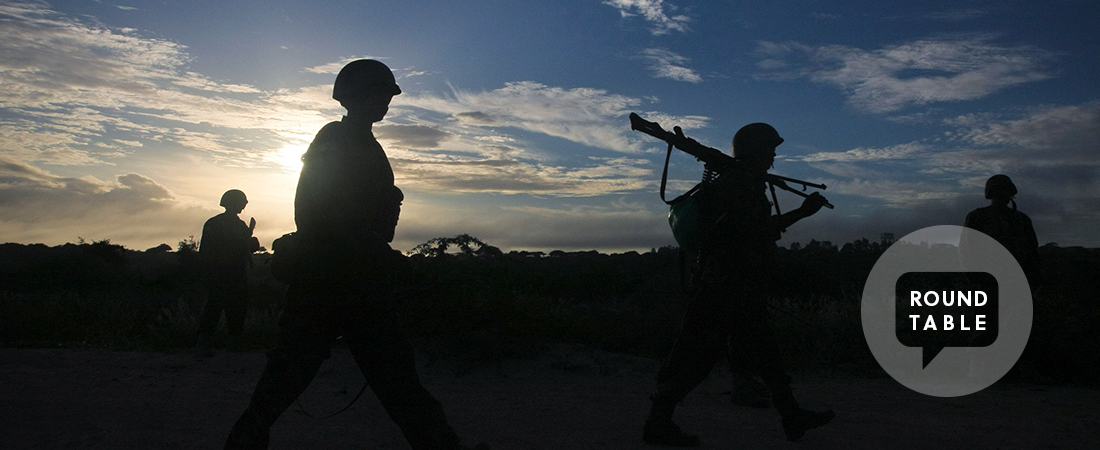How Can We Turn Youth Away from a Violent Future?

"Violent extremist groups prey on those who don’t feel like they are part of a community," says EDC's Nancy Wallace.
What would cause a young person to voluntarily join a violent extremist group, such as Boko Haram, al-Shabaab, or Abu Sayyaf?
It’s usually not a political choice. Extremist groups recruit young people by promising money, opportunity, and community—arguments that are most persuasive in places where youth are disaffected, and where they have few economic opportunities to advance their lives. EDC has long worked to develop programs that counter the lure of violent extremism in Latin America, sub-Saharan Africa, and Southeast Asia. Here, EDC’s Nancy Wallace, Adwoa Atta-Krah, and Kit Yasin discuss what the international development community can do to help young people reject violent extremism in their communities.
Forge connections
Nancy Wallace
Violent extremism is not just a poor person’s problem. Violent extremist groups prey on those who feel disenfranchised, who don’t have a vision for the future, and who don’t feel like they are part of a community.
To counter this pull, we have to connect individuals at risk of recruitment into the larger community. Job training and basic education programs do this effectively because they offer skills that people want, while also helping them forge the personal connections that they need. Those bonds counteract isolation.
In the Philippines, EDC’s Mindanao Youth for Development (MYDev) program is countering extremism by offering life skills and workforce development training to young people at risk for recruitment by violent groups. We’ve seen that having marketable work skills is very important to young people. But the real power of the program is that it helps young people connect to a community. Youth are introduced to a network of peers, trainers, and community leaders who want to make a positive difference. They learn what they can reasonably expect from the government and what they have to do for themselves, which keeps them from feeling isolated and excluded. And this has a real impact: based on local military reports, extremist groups have actually halted recruitment in some cities where MYDev is offering services.
Focus on economic development
Adwoa Atta-Krah
One of the best things we can do to counter violent extremism is to make sure that youth have a source of income through employment or entrepreneurship. This makes them less dependent on others and builds their confidence. Yes, there are all kinds of reasons why youth are attracted to extremist groups—but we must not forget that economics plays a big role. Youth are paid to join these groups. In fact, we know that most young people would prefer to stay in their home community if they could earn a living there.
So economic development is critical, but it doesn’t have to be complicated. In Mali, we had great success training young people to make soap, to grow crops, to raise livestock, and to open small restaurants through the PAJE-Nièta project. This approach worked because all of these services were in demand locally. Youth could actually earn an income through the skills they were learning.
But this project did more than just provide youth with income. We saw that youth who were previously idle and financially dependent on their families became more engaged with their community, too. They were less interested in joining extremist groups because they had a new sense of purpose.
Education is prevention
Kit Yasin
Countering violent extremism, especially in countries that have a culture of violence, requires us to give youth a reason to reject the violence that they see all around them. You have to teach them that violence is not normal and provide safe spaces to prove it.
This can be a dangerous proposition in communities where educators often fear for their own safety. In some settings, teaching children about the importance of conflict resolution can be considered propaganda. It is very important to ground such efforts in traditional stories of peace-building, which exist in nearly all cultures.
In gang-ridden environments, simply hearing students’ stories about violence in their home and in their community can put teachers in danger. So from an international development perspective, it is extremely important to first do no harm and to be sure that teachers are equipped with the right training and resources before trying to address such violence.
But challenging that violent narrative is critical to countering extremism. At some point, many children in violent communities will be faced with a choice of whether or not to accept a monetary reward or protection for joining an extremist group. By offering positive alternatives, we can teach them that the path toward peace is the one worth taking.


